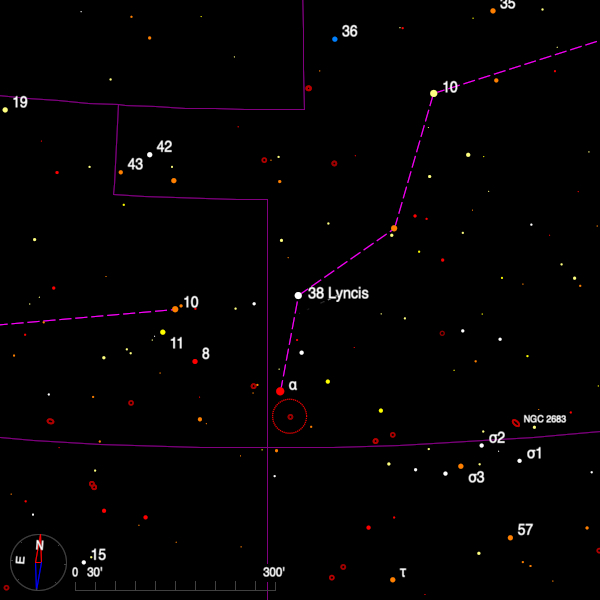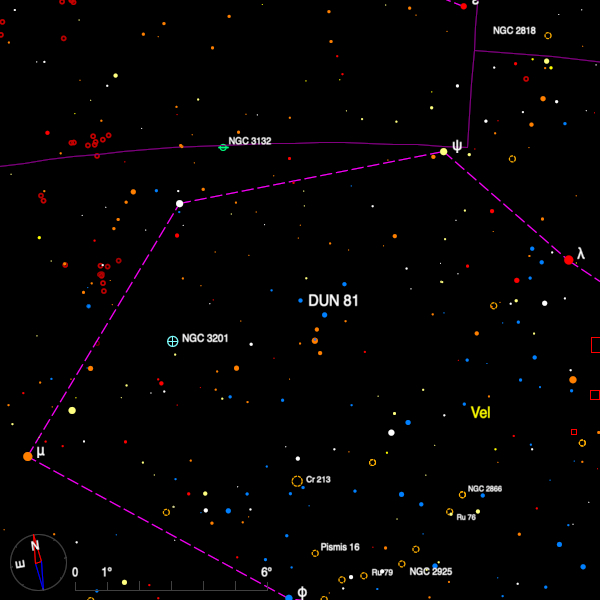March 2024 - Double Star of the Month
In a sparse area of sky south of Ursa Major a faint triangle of naked-eye stars can be seen. They straddle the border between Lynx and Leo Minor. The north-eastern of these stars is 38 Lyncis (09 18 50.64 +36 48 09.3), a beautiful pair whose components are magnitudes 3.9 and 6.1 and whose position angle has reduced just 15 degrees in the 200 years since the pair was first measured. The separation is 2".6 so a moderate magnification needs to be used to separate the stars adequately.

An orbit with a period of 2782.8335 years, published in 2019, needs to be regarded with some scepticism but the stars are certainly physical, as shown by the parallaxes which the Gaia satellite has provided. Speckle interferometry reveals that B is a very close pair with two observations only and a measured separation of 0".1 to 0".2, and the Washington Double Star catalog (WDS) indicates that the A component is a 2 day eclipsing binary, found by the TESS satellite.
There are optical companions (C,D) at 79" and 173" respectively, both of magnitude 12.5, and a fainter component E (magnitude 14.7) which is 101" away, but which has the same large parallax and proper motion as the bright stars thus elevating the whole system to quintuple status.
DUN 81 (09 54 17.66 -45 17 00.6) can be found in northern Vela. It is a bright and easy pair with components of magnitudes 5.8 and 8.2. When found in 1826 the PA was 239 degrees and separation 4".0. It is nearer to 5".6 today with no apparent change in position angle.

These are distant stars but the parallax of each star suggests that they are related. The Gaia Data Release 3 (Gaia DR3) catalogue gives 1124 ± 6 and 1136 ± 16 light-years respectively for A and B, with similar proper motions. The primary is a B5 dwarf according to Simbad and whilst no spectral type can be found for B, its almost zero (B-V) colour suggests a hot, young star.
Using a 200" search radius on the Gaia DR3 catalogue shows a number of stars around magnitude 20 at about the same distance as the bright pair although admittedly the errors in the parallaxes are large it may suggest that there is a loose cluster here.
Bob Argyle - Double Star Section Director